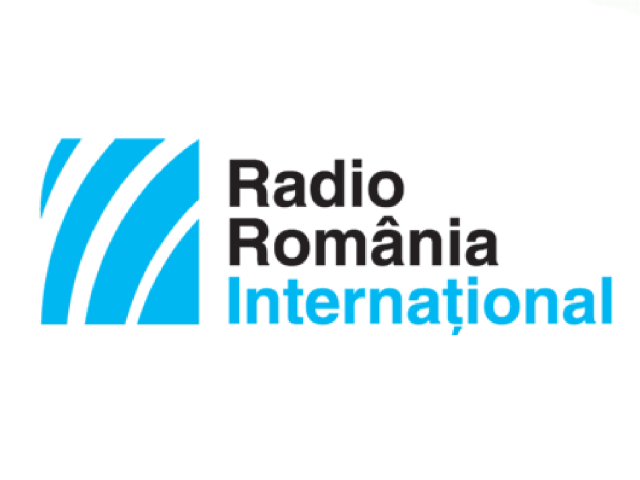National Radio Day, celebrated on November 1st
The early days of radio broadcast in Romania

Steliu Lambru, 07.11.2020, 14:00
The
first signal broadcast from the studios in Bucharest on November 1st,
1928, heralded the existence of a Romanian radio voice, at that time unique around
the world. It was the voice by means of which the world got info about Romania,
about the Romanian society, about its experience or ideals. The Romanian Broadcasting
Corporation, through its programs, has always catered for a series of needs of
Romanian society as a whole. The country’s economic, political, social and
cultural life reflected itself on Hertzian wavelengths, it has also reached out
to listeners via radio broadcasts as well. This is what the historian Eugen
Denize wrote, in his 5-volume history of the Romanian Radio Broadcasting
Corporation. Radio Romania has been broadcasting for more than nine decades now.
Speaking at the microphone were political personalities, but also such
prominent novelists, poets or literary critics, as Mihail Sadoveanu, Tudor
Arghezi, or G. Călinescu, or the historians Andrei Oţetea and C.C. Giurescu, as
well as many others. Radio Romania had a 16-year long history before the
instatement of the communist regime in the counry. In its short democratic
history back then, Radio Romania faithfully fulfilled its initial aim and
purpose.
Shortly
after Radio Romania’s first broadcast, foreign language programmes were also
broadcast by the Romanian Radio Broadcasting Corporation. Such programmes were
thought out to inform the diplomatic corps in Romania’s capital city. In 1932,
radio listeners could hear the first broadcasts in French and English. These
were news reels and current affairs programmes. In the Second World War years,
Radio Romania’s foreign services kept foreigners informed about the most recent
progress of the operations on the frontline, and about the population’s state
of mind. After World war Two, Radio Romania’s foreign languages service became
more important. The Foreign Broadcast Editorial Office was founded, while
speakers of foreign languages or native speakers were employed to propagandize
the new communist Romania.
Liliana
Museteanu was head of Radio Romania’s
written archives. She outlined the early days of radio broadcasts in Bucharest.
Liliana Museteanu:
The early days of radio broadcasting can be placed in 1925, the year
when the Radio Broadcasting Friends’ Association was founded, it was the creation
of a group of prominent specialists in the field, headed by professor Dragomir
Hurmuzescu, who can quite aptly be called the father of Romanian
broadcasting. The association made the first broadcasts from the building of
the Bucharest Polytechnic’s Electrotechnical Institute, broadcasts were scarce
at the beginning, targeting a very limited zone, mainly in Bucharest. The year
1927 is the year when even a broadcast station was built, also on the premises
at the Electrotechnical Institute, yet it was actually a precursor of the
national radio broadcaster, because in late 1928, through a royal decree, the
Romanian Society of Radio-telephony Broadcasting was established. In 1928, a
building had been purchased, even prior to the beginning of broadcasts in
November, it was a building located in 60 Berthelot street, a very beautiful
and elegant building, but which soon turned out to be not big enough for its
initial purpose.
A
different period of time in the history of radio Romania began after 1945. It
would last until 1989. It was a period of blatant violation of basic human
rights, all throughout the communist regime. In much the same way as the press
as a whole and the state apparatus, Radio Romania also became part and parcel
of the communist societal model. Its initial mission was fatefully altered.
According to the historian Eugen Denize, the instatement of the communist
power in Romania, for the Romanian Radio Broadcasting Corporation meant a
complete rift with the past. First of all, from a managerial point of view, the
Society underwent a groundbreaking transformation and became a state
institution.
The
premises that, in time, played host to Romanian radio broadcasting, changed,
today’s building being the third since the foundation of Radio Romania. The
development of radio broadcasting required the allocation of supplementary
premises for that purpose. Today, Radio Romania’s premises can be found on 60-64
General Berthelot street. The street bears the name of an illustrious French
general, the head of the French mission dispatched in Romania in 1917.
Liliana Museteanu:
The building from where the main broadcasts were operated, located on 60
General Berthelot street, became increasingly hard to manage, precisely because
of the technical circumstances. The air raids on August 23, 1944, seriously
affected the building in General Berthelot street, and then the Society had to relocate
to different quarters. Part of the broadcasts were operated from an attic in
Sf. Sava College, which was especially changed to fit that purpose, and from
Bod. The station in Baneasa was destroyed during the air raids.
In the
years to come, the building on 60 Berthelot Street was refurbished in 1947. But
the new project, today’s Radio House, is the creation of a team of architects
and engineers headed by architect Tiberiu Ricci and engineer Leon Garcia. The House
of Radio Broadcasting was inaugurated on November 27, 1952. It was thought out
as a radio broadcasting production center, capable of catering for all needs. Two
studios were brought into service, with a capacity of 550 cubic meters each, as
well as two other studios, with a capacity of 120 cubic meters. Added to them
were two radio drama studios, 14 recording studios and 11 technical studios,
Radio Romania’s Concert hall was inaugurated in 1960. It had a special
acoustics, arguably being one of the great achievements of that time.
(Translation by Eugen Nasta)






























